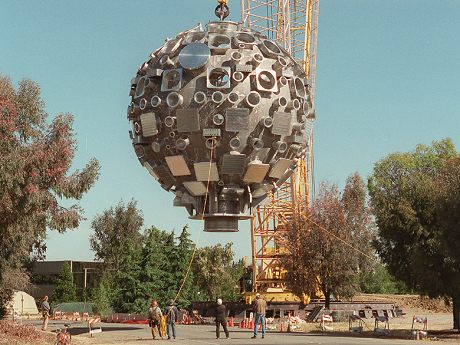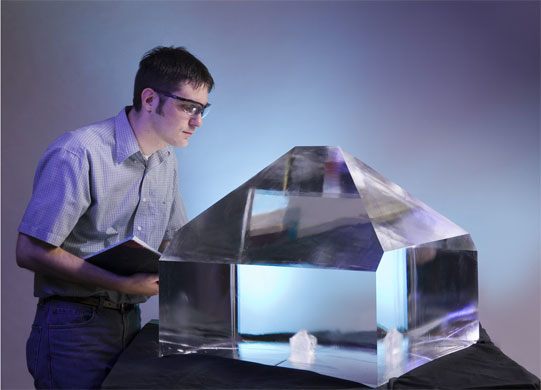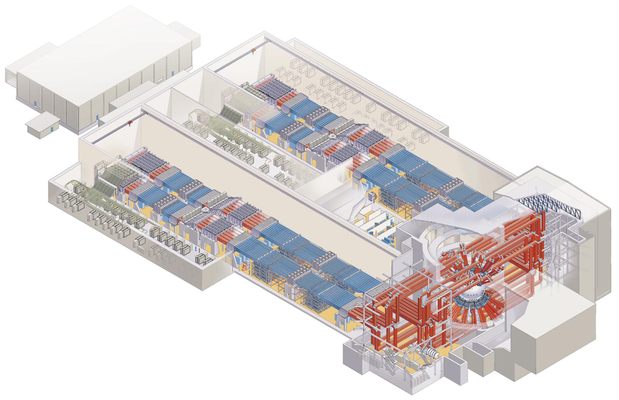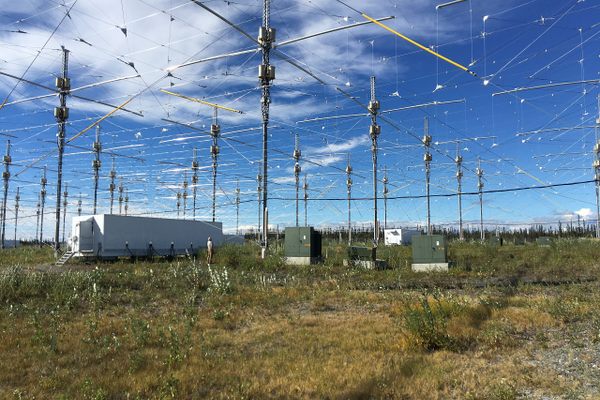About
The government website for the National Ignition Facility has a curious recipe on it. It reads as such:
1.Take a hollow, spherical plastic capsule about two millimeters in diameter (about the size of a small pea.) 2.Fill it with 150 micrograms (less than one-millionth of a pound) of a mixture of deuterium and tritium, the two heavy isotopes of hydrogen. 3. Take a laser that for about 20 billionths of a second can generate 500 trillion watts – the equivalent of five million million 100-watt 4. Focus all that laser power onto the surface of the capsule. 5. Wait ten billionths of a second.
Result: one miniature star.
The aim of the NIF (which recently hung a banner reading “Bringing Star Power to Earth”) is not really to make tiny stars (they only last five billionths of a second so there is not much chance to appreciate their beauty) but to create a fusion burn, the kind which happen in the sun and during atomic explosions. During this fusion "burn," the tiny pea of fuel would reach almost total "burn" and release ten to 100 times more energy then was used to initiate the fusion process. While this claim immediately rings of perpetual motion machines it has solid science behind it. It achieves this energy release by setting off a chain reaction in which the hydrogen atoms fuse, much like the fusion reaction that powers our sun.
To create this the NIF must compress this "small pea" of hydrogen isotopes (what makes a atom an isotope is having a different number of neutrons then their periodic brother, in this case hydrogen) to a density of a hundred times that of solid lead, (or a density of 1134 grams per cubic centimeter, meaning that a 1 centimeter cube would weigh roughly 2.5 pounds) compressing the hydrogen pea at a million miles an hour to much, much smaller size, and heating it to 100 million degrees Celsius – hotter than the center of the sun. To accomplish this incredible task they need a really, really big laser.
Luckily the NIF has the largest laser in the world. The laser itself is an enormous feat of engineering and involved breakthroughs of its own, among others: the creation of the largest optical instrument ever built, via a rapid growth system that grew an 800 pound crystal used to be used to focus the laser, in only two months, special "deformable" mirrors that help compensate for focusing mistakes, a three story spherical diameter target-chamber weighing some 287,000 pounds, and 60 miles of mirrors and fiber optics, all of which is housed in a 10-story warehouse building the size of three football fields.
While starting with a single laser, the NIF will splits the stream into 192 individual beams, which will come together from all directions, and “within a few trillionths of a second” will focus roughly two million joules of ultraviolet laser energy on the tiny hydrogen pea. Technically in this case they may focus the energy not directly on the pea but on a hohlraum, or holder which will radiate the energy via x-rays onto the pea. this is known as the indirect drive method.)
Begun in 1997 the facility is only now coming online and will begin attempting to make these tiny stars (at a target rate of 700 per year) in 2010. Far behind schedule, and four times over budget (at 3.5 billion) the NIF has faced harsh criticism and have been accused of being a lackey for the nuclear industry, as they are intimately involved with the testing of the US nuclear stockpile. There have also been criticisms that the lasers can't focus on such a small target, and that the NIF will never be able to achieve ignition in the hydrogen pea, derisively calling them the National Almost Ignition Facility, or NAIF.
All of which will be put to the test as the NIF comes online and begins its first major tests in 2010. If they are in fact able to achieve fusion and generate even just 10 times the energy that was used to start the sequence, it would provide a entirely new outlook on the energy future of the world. As California governor Arnold Schwarzenegger put it, it would quite simply "revolutionise our energy future."
Related Tags
Published
November 20, 2009





































